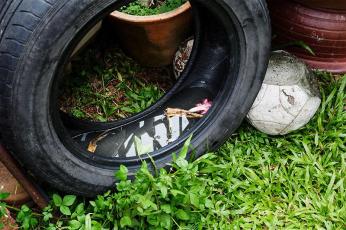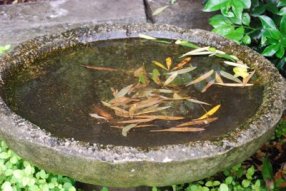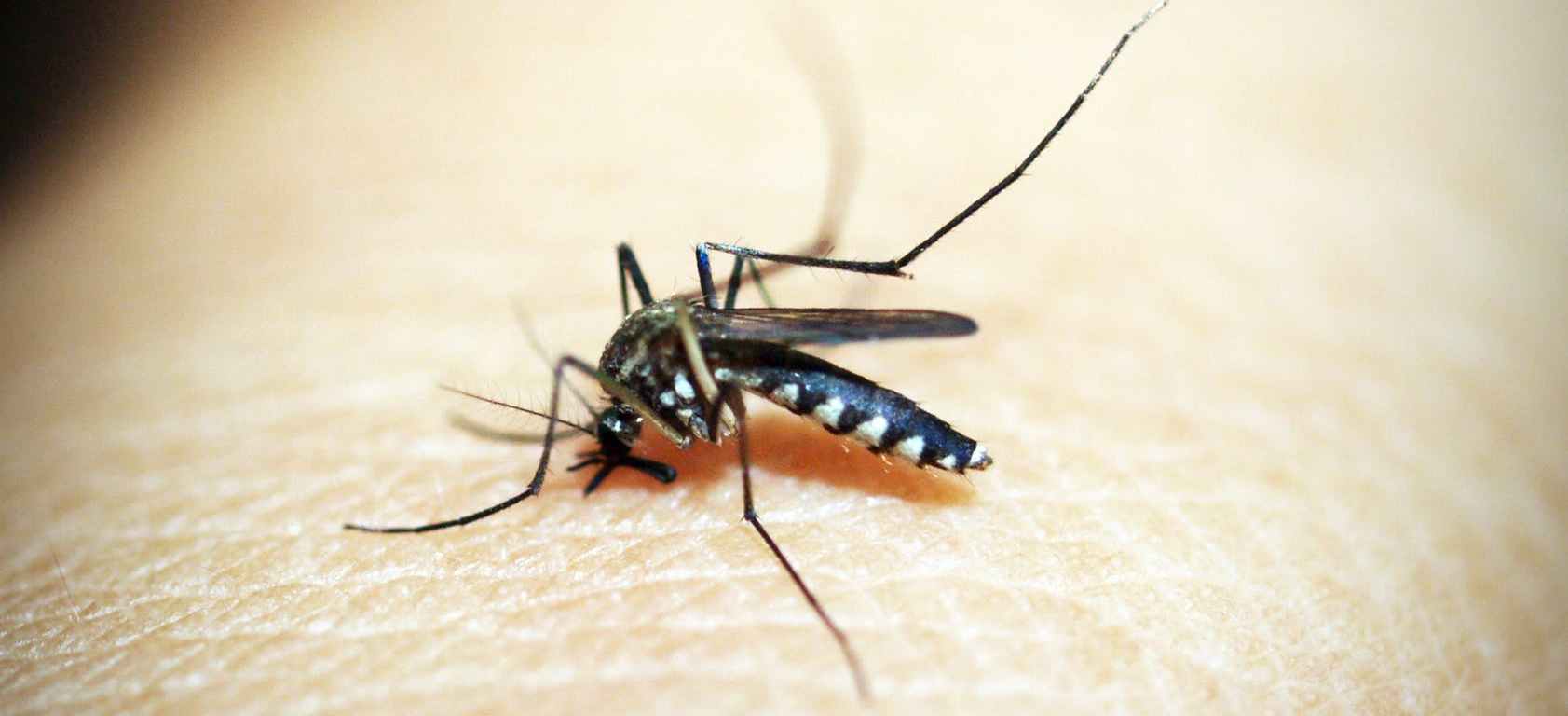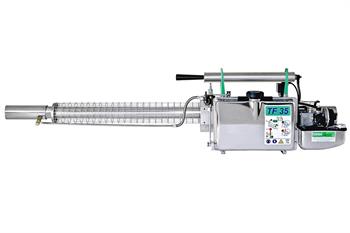Your best bet: Eliminate breeding grounds.
You may not know that the mosquito is the most deadly animal in the world. Mosquito bites result in the deaths of more than 1 million people every year. The World Health Organization estimates that between 300 and 500 million cases of malaria occur each year and a child dies from malaria every 30 seconds.
Other Mosquito-borne diseases include West Nile virus disease, Eastern equine encephalitis, and St. Louis encephalitis. Many other mosquito-borne diseases are found in different parts of the world. Some examples of these diseases include chikungunya fever, dengue fever, malaria, yellow fever, Rift Valley fever and the zika virus.
A critical part of mosquito control around your home is making sure that mosquitoes don’t have a place to lay their eggs. Because mosquitoes need water for two stages of their life cycle it is important to monitor standing water sources. Even those that you might not realize are a perfect breeding grounds.
Important Fact:
Mosquitoes lay their eggs in still water, those eggs develop to become an adult insect. Mosquitoes have four stages in their life cycle. Eggs > Larva > Pupa >Adult. It is your best bet to reduce the insects breeding grounds.
Below we have compiled various detailed prevention tips to reduce breeding and bites.
 Destroy or dispose of tin cans, old tires, buckets, unused plastic swimming pools or other containers that collect and hold water. Do not allow water to accumulate in the saucers of flowerpots, cemetery urns or in pet dishes for more than 2 days.
Destroy or dispose of tin cans, old tires, buckets, unused plastic swimming pools or other containers that collect and hold water. Do not allow water to accumulate in the saucers of flowerpots, cemetery urns or in pet dishes for more than 2 days.
- Clean debris from rain gutters and remove any standing water under or around structures, or on flat roofs. Check around faucets and air conditioner units and repair leaks or eliminate puddles that remain for several days.

- Change the water in birdbaths and wading pools at least once a week and stock ornamental pools with top feeding predacious minnows.
- Fill or drain puddles, ditches and swampy areas, and either remove, drain or fill tree holes and stumps with mortar.
- Eliminate standing water around animal watering troughs. Flush livestock water troughs twice a week.
- Check for trapped water in plastic or canvas tarps used to cover boats, pools, etc. Arrange the tarp to drain the water.
- Check around construction sites or do-it-yourself improvements to ensure that proper backfilling and grading prevent drainage problems.
- Irrigate lawns and gardens carefully to prevent water from standing for several days.
 If ditches do not flow and contain stagnant water for one week or longer, they can produce large numbers of mosquitoes. Report such conditions to a Mosquito Control or Public Health Office. Do not attempt to clear these ditches because they may be protected by wetland regulations.
If ditches do not flow and contain stagnant water for one week or longer, they can produce large numbers of mosquitoes. Report such conditions to a Mosquito Control or Public Health Office. Do not attempt to clear these ditches because they may be protected by wetland regulations.
- Keep swimming pool water treated and circulating.
- Using an EPA-registered pesticide is one of the fastest and best options to combat an outbreak of mosquito-borne disease being transmitted by adult mosquitoes.
- Consider the use of a hand-held ULV fogger, or a Thermal Fogger like the IGEBA TF-35.

IGEBA® – The Global Standard for Excellence in Thermal Fogging
The IGEBA TF-35 is a lightweight and easily portable pulse jet thermal fogger capable of applying 11 gallons (42 Liters) of solution per hour. Use the TF-35 model to apply oil based formulations with the supplied fog tube.
- Bird Control with Fog Bird Repellent
- Vector disease control for flying insects
- Disinfection of poultry and animal containment
- Mold and Mildew abatement
- Pest control for greenhouses, plant nurseries, etc.
- Training tool for military/law enforcement
- Special effects for film/entertainment
Since 1982, IGEBA has manufactured the highest quality fogging equipment in the world. Nixalite of America is an approved IGEBA Fogger Service Center. We can upgrade, maintain, or repair your IGEBA Foggers. Contact Us for details.
Bonus:
“Always remember the 3 D’s of protection from mosquitoes”
Drain
All mosquitoes require water in which to breed. Be sure to drain any standing water around your house.
- Even the smallest of containers that can collect water can breed hundreds to thousands of mosquitoes. They don’t need much water to lay their eggs. (bottles, barrels, buckets, overturned garbage can lids, etc.)
Dress
- Wear light-colored, loose-fitting clothing. Some of the 176 mosquito species are attracted to dark clothing and some can bite through tight-fitting clothes. When practical, wear long sleeves and pants.
Defend
- Choose a mosquito repellent that has been registered by the EPA.
Here are some rules to follow when using repellents:
- Read the directions on the label carefully before applying.
- Apply repellent sparingly, only to exposed skin (not on clothing).
- Keep repellents away from eyes, nostrils, and lips: do not inhale or ingest repellents or get them into the eyes.
- The American Academy of Pediatrics suggests that DEET-based repellents can be used on children as young as two months of age. Generally, the AAP recommends concentrations of 30% or less.
- Avoid applying repellents to portions of children’s hands that are likely to have contact with eyes or mouth.
- Pregnant and nursing women should minimize the use of repellents.
- Never use repellents on wounds or irritated skin.
- Use repellent sparingly and reapply as needed. Saturation does not increase efficacy.
- Wash repellent-treated skin after coming indoors.
- If a suspected reaction to insect repellents occurs, wash treated skin, and call a physician. Take the repellent container to the physician.
Read more: 5 Types of Repellants to Skip
Nixalite will help you select the best mosquito control products for your needs. We offer complete planning and product support services. If at any time you have questions, please Contact Nixalite.


